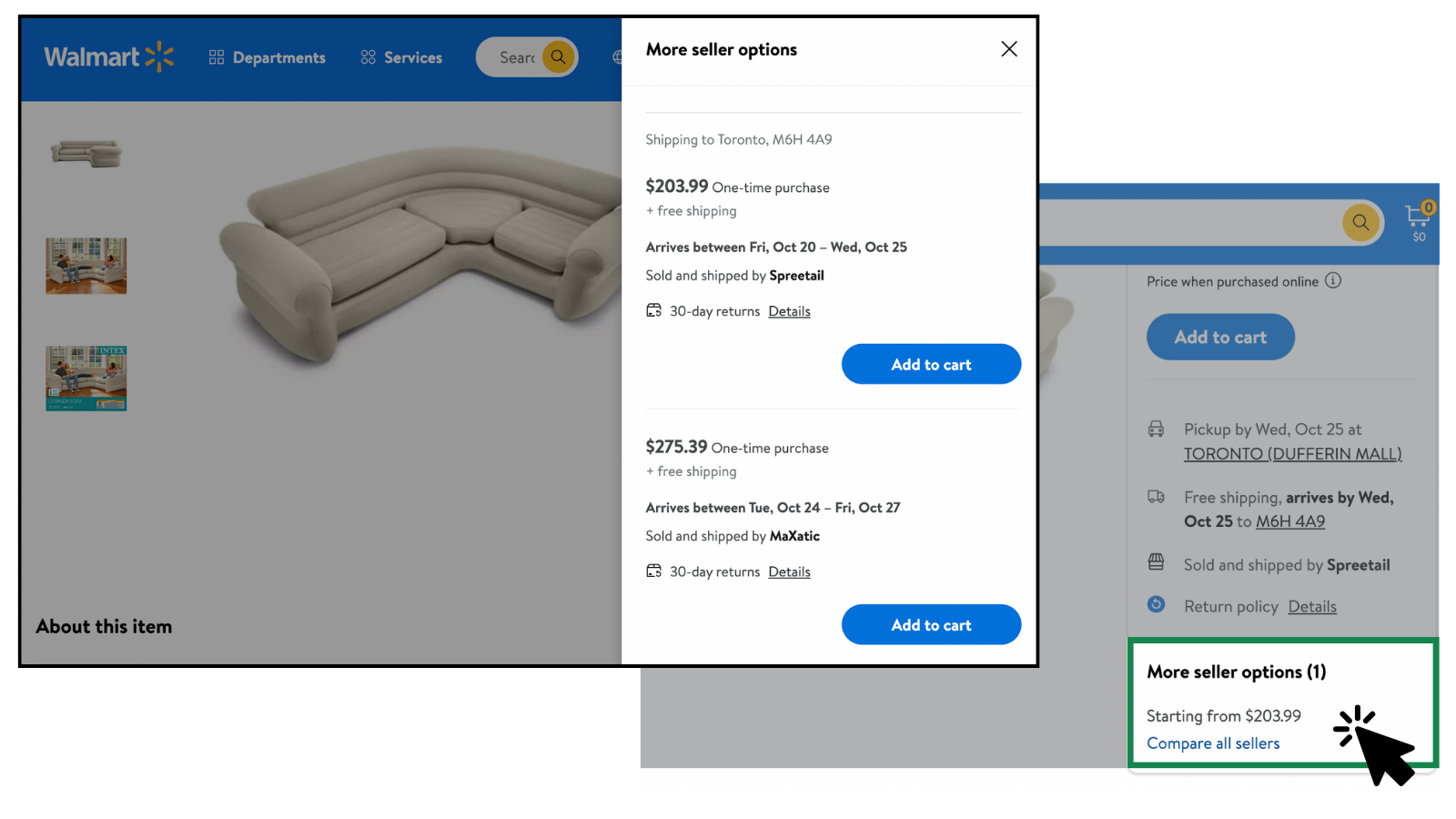 All blog posts
All blog posts
GTINs explained: definition, structure, how they work
You may have never heard of GTINs until recently when you were told by a retailer or shopping platform that your products need them. Don't worry, you're not alone.
GTINs are a type of unique product identifier that's used to define products in the global marketplace. Continue reading to learn why they're needed in ecommerce, how they work, and how to get them for the products you sell.
Table of Contents
- What is a GTIN?
- GTIN Numbers vs. Barcodes
- There are different types of GTIN Numbers
- How are GTINs formed?
- What information is stored in a GTIN?
- How and where are GTINs used?
- What you need to know about getting GTINs
Continue reading to learn about the different types of GTINs, how they’re formed, and why they’re so important.
What is a GTIN?
GTIN stands for Global Trade Identification Number (GTIN) and is an internationally recognized system developed by GS1 to identify products in the global marketplace. A GTIN is a sequence of numbers that’s 8-14 digits long. Similar to how a person’s fingerprint is unique, GTINs are unique to products. Every product and product variant has its own GTIN.
GTIN Numbers vs. Barcodes
In the GS1 system, there are data carriers and data itself. A data carrier is a barcode, which is the symbol of black and white lines that gets scanned at points of sale (POS). The data stored inside a barcode is a GTIN, an 8-14 digit code that gets read by scanners. It’s also found underneath a product’s barcode.
Sometimes the terms GTIN and barcode get used interchangeably, but it’s important to understand they are two different things. Barcodes are a visual representation of a product’s GTIN number.
There are different types of GTIN Numbers
There are 4 different structures of GTINs that can be encoded into different types of barcodes depending on what a product is, where it’s sold, and how it’s sold.
There’s quite a few different types of barcodes that exist in the world, however, the most common types used for retail goods are UPC - Universal Product Code, and EAN - European Article Number. All you need to know for now is that there are different barcode types that carry different GTIN structures.
Below are the four different types of data structures that a GTIN can follow:
- GTIN-8: this is an 8-digit number primarily used outside North America & used at point-of-sale for small items
- GTIN-12: this is a 12-digit number primarily used in North America & used at point-of-sale for single-unit items (the most common structure for most ecommerce brands)
- GTIN-13: this a 13-digit number primarily used outside North America & used at point-of-sale for larger items where a GTIN-8 doesn’t fit
- GTIN-14: this a 14-digit number primarily used in North America, it’s not used at point-of-sale as its main use case is for wholesale or multipack products
Here’s an overview of each GTIN structure and how they’re used:
How are GTINs formed?
Regardless of its structures (ie. the number of digits), all GTINs use the same composition. There are 4 parts to a GTIN number:
- Indicator digit: a number from 1-8 used to indicate a packaging level and is only used in GTIN-14 structures
- GS1 Company Prefix: a unique string of digits used to identify your company as the owner of a product. Companies license a Prefix from GS1 so that every GTIN uses the same Prefix, making your product easily recognizable by other trade partners.
- Item Reference number: a number assigned by a company to identify a product and varies in length depending on the Prefix
- Check digit: the final digit of a GTIN number that can be used to verify a GTIN has been entered properly
Here’s a visual representation of how a GTIN-12 is composed:

What information is stored in a GTIN?
The primary purpose of GTINs is to identify products. If we take the example of license plates on cars. Each car has a unique license plate number which is used to identify a vehicle. But we can also use a license plate number to look up information about the car itself and who owns it. The same is true for GTINs. We can use a GTIN to differentiate products and identify which company owns a product, what country it’s sold in, and its packaging level.
When GTINs are created, companies can input the following accompanying product data:
- Brand name (*required)
- Product Description (*required)
- Industry
- Packaging level
- SKU
- MPN
- Product page URL
Having this data associated with your product’s GTIN is helpful for retailers and other trade partners when they need to verify and authenticate your products.
How and where are GTINs used?
GTINs are used to uniquely identify products. Meaning, that when a product has a valid GTIN, it’s almost impossible to mistake it for another. This makes them most useful in physical retail settings and ecommerce. Let's take a look at some of the different use cases for GTINs IRL and online.
Important use cases of GTINs in retail stores
GTINs make it possible for your products to be sold in physical stores. They’re encoded into your product’s barcode and make it easy to read and process product data at the point of sale. Specifically, GTINs are used in the following circumstances:
- When a product’s barcode is scanned at the point of sale, its GTIN number is read into the POS system to provide information about the product (e.g. price, stock level, etc). This saves time manually entering product information & eliminates the risk of entering the wrong data
- GTINs are used to track stock levels of products across multiple retail locations so that companies can make informed decisions about order replenishment
- Warehousing and distribution centers also rely on GTINs to quickly identify products and make sure the correct shipments are being delivered to the right location
Important use cases of GTINs in ecommerce
In ecommerce where physical products can’t be seen, GTIN numbers are used to correctly identify products and share product data. Specifically, GTINs are used in the following circumstances:
- Shopping Platforms (Google Shopping, Amazon, Walmart): improve the visibility of your product listings ads to optimize for conversions, match products to relevant search queries & serve your product listings in recommendation and comparison results
- Marketplaces: authenticate your product from counterfeits that may be trying to list their products on the same platform & combine the same products sold by different retailers into a single product listing
- Review providers: Junip uses GTINs to syndicate reviews to product listings on Google Shopping & ensure reviews are being displayed on the correct product listing
- 3PL: barcodes are scanned and GTINs are used in shipping and fulfillment operations to ensure the correct products are being picked and packed, reducing order errors
- Product Catalog: when all of your products have valid GTINs, this ensures you have a high-quality product catalog that makes it super easy to list your products in other places and share product data

What you need to know about getting GTINs
Now that we have a good understanding of what exactly a GTIN is, you’re probably wondering how to get them. The first thing you need to know is that GTINs must be purchased from the governing body responsible for developing the system, GS1. Brands cannot assign themselves a GTIN number as they do with SKUs and Product Titles. For an in-depth guide and instructions about how you can purchase GTINs from GS1, read our guide here.




